I DIG® COMPUTER STYLES
-
This I Dig Computer style timeline explores the history of computing from 1939 to 2012. Each year features illustrated descriptions of significant innovations in hardware and software technology, as well as milestones in areas such as commercial applications and artificial intelligence. When appropriate, biographical sketches of the pioneers responsible for the advances are included.
1939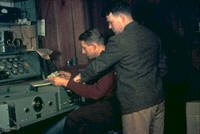
Hewlett-Packard is Founded. David Packard and Bill Hewlett found Hewlett-Packard in a Palo Alto, California garage. Their first product was the HP 200A Audio Oscillator, which rapidly becomes a popular piece of test equipment for engineers. Walt Disney Pictures ordered eight of the 200B model to use as sound effects generators for the 1940 movie “Fantasia.” 1940
The Complex Number Calculator (CNC) is completed. In 1939, Bell Telephone Laboratories completed this calculator, designed by researcher George Stibitz. In 1940, Stibitz demonstrated the CNC at an American Mathematical Society conference held at Dartmouth College. Stibitz stunned the group by performing calculations remotely on the CNC (located in New York City) using a Teletype connected via special telephone lines. This is considered to be the first demonstration of remote access computing.
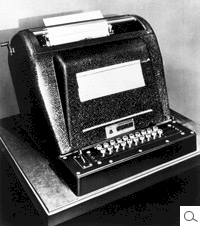
1941
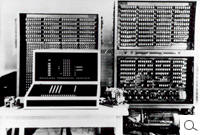
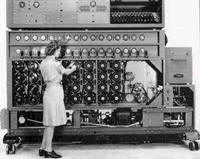
Konrad Zuse finishes the Z3 computer. The Z3 was an early computer built by German engineer Konrad Zuse working in complete isolation from developments elsewhere. Using 2,300 relays, the Z3 used floating point binary arithmetic and had a 22-bit word length. The original Z3 was destroyed in a bombing raid of Berlin in late 1943. However, Zuse later supervised a reconstruction of the Z3 in the 1960s which is currently on display at the Deutsches Museum in Munich.
1942
The Atanasoff-Berry Computer (ABC) is completed. After successfully demonstrating a proof-of-concept prototype in 1939, Atanasoff received funds to build the full-scale machine. Built at Iowa State College (now University), the ABC was designed and built by Professor John Vincent Atanasoff and graduate student Cliff Berry between 1939 and 1942. The ABC was at the center of a patent dispute relating to the invention of the computer, which was resolved in 1973 when it was shown that ENIAC co-designer John Mauchly had come to examine the ABC shortly after it became functional.
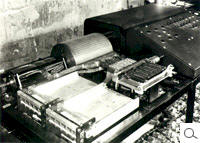
1943
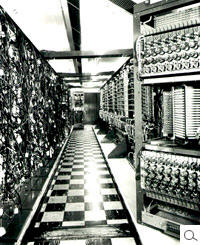
Project Whirlwind begins. During World War II, the U.S. Navy approached the Massachusetts Institute of Technology (MIT) about building a flight simulator to train bomber crews. The team first built a large analog computer, but found it inaccurate and inflexible. After designers saw a demonstration of the ENIAC computer, they decided on building a digital computer. By the time the Whirlwind was completed in 1951, the Navy had lost interest in the project, though the U.S. Air Force would eventually support the project which would influence the design of the SAGE program. 1944
Harvard Mark-1 is completed. Conceived by Harvard professor Howard Aiken, and designed and built by IBM, the Harvard Mark-1 was a room-sized, relay-based calculator. The machine had a fifty-foot long camshaft that synchronized the machine’s thousands of component parts. The Mark-1 was used to produce mathematical tables but was soon superseded by stored program computers. 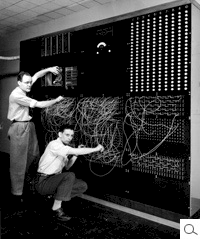
1945
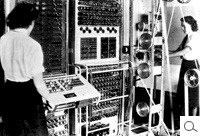
The first Colossus is operational at Bletchley Park. Designed by British engineer Tommy Flowers, the Colossus was designed to break the complex Lorenz ciphers used by the Nazis during WWII. A total of ten Colossi were delivered to Bletchley, each using 1,500 vacuum tubes and a series of pulleys transported continuous rolls of punched paper tape containing possible solutions to a particular code. Colossus reduced the time to break Lorenz messages from weeks to hours. The machine’s existence was not made public until the 1970s
1946
In February, the public got its first glimpse of the ENIAC, a machine built by John Mauchly and J. Presper Eckert that improved by 1,000 times on the speed of its contemporaries.
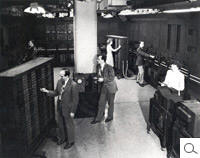
1947
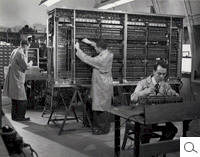
An inspiring summer school on computing at the University of Pennsylvania´s Moore School of Electrical Engineering stimulated construction of stored-program computers at universities and research institutions. This free, public set of lectures inspired the EDSAC, BINAC, and, later, IAS machine clones like the AVIDAC. Here, Warren Kelleher completes the wiring of the arithmetic unit components of the AVIDAC at Argonne National Laboratory. Robert Dennis installs the inter-unit wiring as James Woody Jr. adjusts the deflection control circuits of the memory unit.
1948
IBM´s Selective Sequence Electronic Calculator computed scientific data in public display near the company´s Manhattan headquarters. Before its decommissioning in 1952, the SSEC produced the moon-position tables used for plotting the course of the 1969 Apollo flight to the moon.
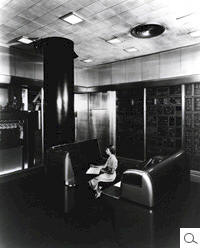
1949
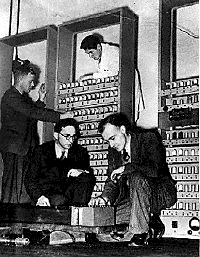
Maurice Wilkes assembled the EDSAC, the first practical stored-program computer, at Cambridge University. His ideas grew out of the Moore School lectures he had attended three years earlier.
For programming the EDSAC, Wilkes established a library of short programs called subroutines stored on punched paper tapes.1950
Engineering Research Associates of Minneapolis built the ERA 1101, the first commercially produced computer; the company´s first customer was the U.S. Navy. It held 1 million bits on its magnetic drum, the earliest magnetic storage devices. Drums registered information as magnetic pulses in tracks around a metal cylinder. Read/write heads both recorded and recovered the data. Drums eventually stored as many as 4,000 words and retrieved any one of them in as little as five-thousandths of a second.
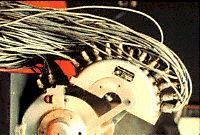
1951
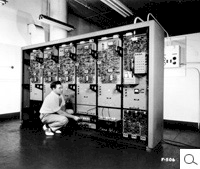
MIT´s Whirlwind debuted on Edward R. Murrow´s "See It Now" television series. Project director Jay Forrester described the computer as a "reliable operating system," running 35 hours a week at 90-percent utility using an electrostatic tube memory.
1952
John von Neumann´s IAS computer became operational at the Institute for Advanced Studies in Princeton, N.J. Contract obliged the builders to share their designs with other research institutes. This resulted in a number of clones: the MANIAC at Los Alamos Scientific Laboratory, the ILLIAC at the University of Illinois, the Johnniac at Rand Corp., the SILLIAC in Australia, and others.
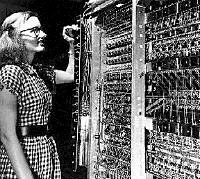
1953

IBM shipped its first electronic computer, the 701. During three years of production, IBM sold 19 machines to research laboratories, aircraft companies, and the federal government
1954
The IBM 650 magnetic drum calculator established itself as the first mass-produced computer, with the company selling 450 in one year. Spinning at 12,500 rpm, the 650´s magnetic data-storage drum allowed much faster access to stored material than drum memory machines.
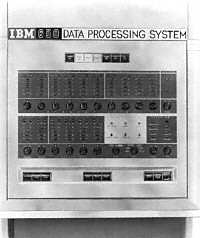
1956
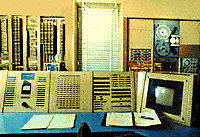
MIT researchers built the TX-0, the first general-purpose, programmable computer built with transistors. For easy replacement, designers placed each transistor circuit inside a "bottle," similar to a vacuum tube. Constructed at MIT´s Lincoln Laboratory, the TX-0 moved to the MIT Research Laboratory of Electronics, where it hosted some early imaginative tests of programming, including a Western movie shown on TV, 3-D tic-tac-toe, and a maze in which mouse found martinis and became increasingly inebriated. 1958
SAGE — Semi-Automatic Ground Environment — linked hundreds of radar stations in the United States and Canada in the first large-scale computer communications network. An operator directed actions by touching a light gun to the screen.
The air defense system operated on the AN/FSQ-7 computer (known as Whirlwind II during its development at MIT) as its central computer. Each computer used a full megawatt of power to drive its 55,000 vacuum tubes, 175,000 diodes and 13,000 transistors.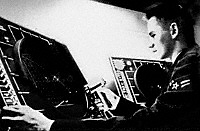
1959
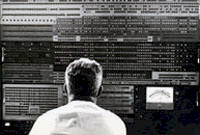
IBM´s 7000 series mainframes were the company´s first transistorized computers. At the top of the line of computers — all of which emerged significantly faster and more dependable than vacuum tube machines — sat the 7030, also known as the "Stretch." Nine of the computers, which featured a 64-bit word and other innovations, were sold to national laboratories and other scientific users. L. R. Johnson first used the term "architecture" in describing the Stretch.
1960
The precursor to the minicomputer, DEC´s PDP-1 sold for $120,000. One of 50 built, the average PDP-1 included with a cathode ray tube graphic display, needed no air conditioning and required only one operator. It´s large scope intrigued early hackers at MIT, who wrote the first computerized video game, SpaceWar!, for it. The SpaceWar! creators then used the game as a standard demonstration on all 50 computers.
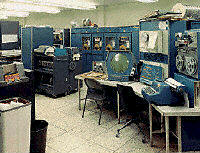
1961
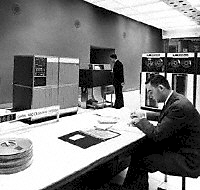
According to Datamation magazine, IBM had an 81.2-percent share of the computer market in 1961, the year in which it introduced the 1400 Series. The 1401 mainframe, the first in the series, replaced the vacuum tube with smaller, more reliable transistors and used a magnetic core memory.
Demand called for more than 12,000 of the 1401 computers, and the machine´s success made a strong case for using general-purpose computers rather than specialized systems.1962
The LINC (Laboratory Instrumentation Computer) offered the first real time laboratory data processing. Designed by Wesley Clark at Lincoln Laboratories, Digital Equipment Corp. later commercialized it as the LINC-8.
Research faculty came to a workshop at MIT to build their own machines, most of which they used in biomedical studies. DEC supplied components.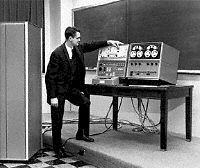
1964
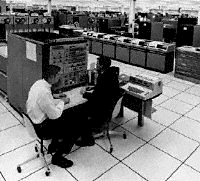
IBM announced the System/360, a family of six mutually compatible computers and 40 peripherals that could work together. The initial investment of $5 billion was quickly returned as orders for the system climbed to 1,000 per month within two years. At the time IBM released the System/360, the company was making a transition from discrete transistors to integrated circuits, and its major source of revenue moved from punched-card equipment to electronic computer systems.
1965
Digital Equipment Corp. introduced the PDP-8, the first commercially successful minicomputer. The PDP-8 sold for $18,000, one-fifth the price of a small IBM 360 mainframe. The speed, small size, and reasonable cost enabled the PDP-8 to go into thousands of manufacturing plants, small businesses, and scientific laboratories.
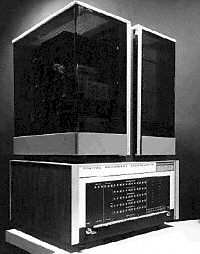
1966
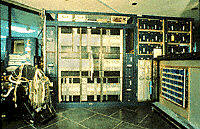
The Department of Defense Advanced Research Projects Agency contracted with the University of Illinois to build a large parallel processing computer, the ILLIAC IV, which did not operate until 1972 at NASA´s Ames Research Center. The first large-scale array computer, the ILLIAC IV achieved a computation speed of 200 million instructions per second, about 300 million operations per second, and 1 billion bits per second of I/O transfer via a unique combination of parallel architecture and the overlapping or "pipe-lining" structure of its 64 processing elements.
1968
Data General Corp., started by a group of engineers that had left Digital Equipment Corp., introduced the Nova, with 32 kilobytes of memory, for $8,000.
In the photograph, Ed deCastro, president and founder of Data General, sits with a Nova minicomputer. The simple architecture of the Nova instruction set inspired Steve Wozniak´s Apple I board eight years later.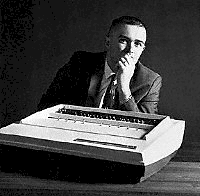
1971
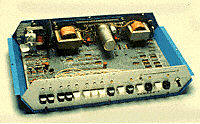 .
.The Kenbak-1, the first personal computer, advertised for $750 in Scientific American. Designed by John V. Blankenbaker using standard medium-scale and small-scale integrated circuits, the Kenbak-1 relied on switches for input and lights for output from its 256-byte memory. In 1973, after selling only 40 machines, Kenbak Corp. closed its doors.
1972
Data General Corp., started by a group of engineers that had left Digital Equipment Corp., introduced the Nova, with 32 kilobytes of memory, for $8,000.
In the photograph, Ed deCastro, president and founder of Data General, sits with a Nova minicomputer. The simple architecture of the Nova instruction set inspired Steve Wozniak´s Apple I board eight years later.
1973
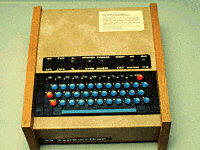 .
.The TV Typewriter, designed by Don Lancaster, provided the first display of alphanumeric information on an ordinary television set. It used $120 worth of electronics components, as outlined in the September 1973 issue of Radio Electronics. The original design included two memory boards and could generate and store 512 characters as 16 lines of 32 characters. A 90-minute cassette tape provided supplementary storage for about 100 pages of text.
1974
Researchers at the Xerox Palo Alto Research Center designed the Alto — the first work station with a built-in mouse for input. The Alto stored several files simultaneously in windows, offered menus and icons, and could link to a local area network. Although Xerox never sold the Alto commercially, it gave a number of them to universities. Engineers later incorporated its features into work stations and personal computers.. 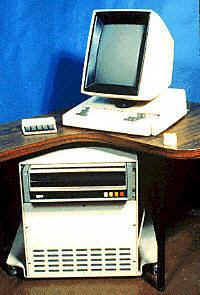
1975
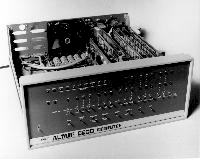
The January edition of Popular Electronics featured the Altair 8800 computer kit, based on Intel´s 8080 microprocessor, on its cover. Within weeks of the computer´s debut, customers inundated the manufacturing company, MITS, with orders. Bill Gates and Paul Allen licensed BASIC as the software language for the Altair. Ed Roberts invented the 8800 — which sold for $297, or $395 with a case — and coined the term "personal computer." The machine came with 256 bytes of memory (expandable to 64K) and an open 100-line bus structure that evolved into the S-100 standard. In 1977, MITS sold out to Pertec, which continued producing Altairs through 1978. 1976
Steve Wozniak designed the Apple I, a single-board computer. With specifications in hand and an order for 100 machines at $500 each from the Byte Shop, he and Steve Jobs got their start in business. In this photograph of the Apple I board, the upper two rows are a video terminal and the lower two rows are the computer. The 6502 microprocessor in the white package sits on the lower right. About 200 of the machines sold before the company announced the Apple II as a complete computer.
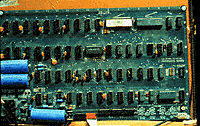
1977
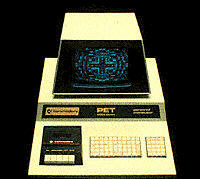
The Commodore PET (Personal Electronic Transactor) — the first of several personal computers released in 1977 — came fully assembled and was straightforward to operate, with either 4 or 8 kilobytes of memory, two built-in cassette drives, and a membrane "chiclet" keyboard.
1979
Atari introduces the Model 400 and 800 Computer. Shortly after delivery of the Atari VCS game console, Atari designed two microcomputers with game capabilities: the Model 400 and Model 800. The two machines were built with the idea that the 400 would serve primarily as a game console while the 800 would be more of a home computer. Both sold well, though they had technical and marketing problems, and faced strong competition from the Apple II, Commodore PET, and TRS-80 computers. 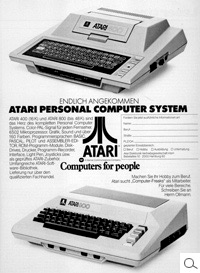
1981
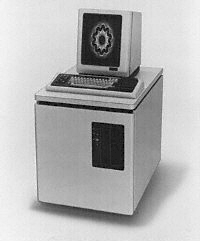
Apollo Computer unveiled the first work station, its DN100, offering more power than some minicomputers at a fraction of the price. Apollo Computer and Sun Microsystems, another early entrant in the work station market, optimized their machines to run the computer-intensive graphics programs common in engineering.
1982
Commodore introduces the Commodore 64. The C64, as it was better known, sold for $595, came with 64KB of RAM and featured impressive graphics. Thousands of software titles were released over the lifespan of the C64. By the time the C64 was discontinued in 1993, it had sold more than 22 million units and is recognized by the 2006 Guinness Book of World Records as the greatest selling single computer model of all time.
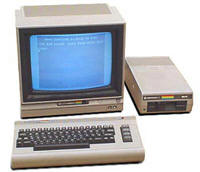
1984
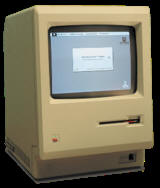
In 1983 Apple Computer introduced the first mass-marketed microcomputer with a graphical user interface, the Lisa. The Lisa ran on a Motorola 68000 microprocessor and came equipped with 1 megabyte of RAM, a 12-inch (300 mm) black-and-white monitor, dual 5¼-inch floppy disk drives and a 5 megabyte Profile hard drive. The Lisa's slow operating speed and high price (US$10,000), however, led to its commercial failure. 1985
The Amiga 1000 is released. Commodore’s Amiga 1000 sold for $1,295 dollars (without monitor) and had audio and video capabilities beyond those found in most other personal computers. It developed a very loyal following and add-on components allowed it to be upgraded easily. The inside of the case is engraved with the signatures of the Amiga designers, including Jay Miner as well as the paw print of his dog Mitchy.
I
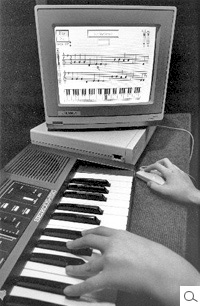
1987
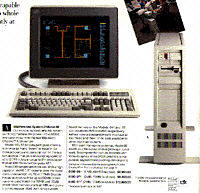
IBM introduced its PS/2 machines, which made the 3 1/2-inch floppy disk drive and video graphics array standard for IBM computers. The first IBMs to include Intel´s 80386 chip, the company had shipped more than 1 million units by the end of the year. IBM released a new operating system, OS/2, at the same time, allowing the use of a mouse with IBMs for the first time.
1988
Apple cofounder Steve Jobs, who left Apple to form his own company, unveiled the NeXT. The computer he created failed but was recognized as an important innovation. At a base price of $6,500, the NeXT ran too slowly to be popular.
The significance of the NeXT rested in its place as the first personal computer to incorporate a drive for an optical storage disk, a built-in digital signal processor that allowed voice recognition, and object-oriented languages to simplify programming. The NeXT offered Motorola 68030 microprocessors, 8 megabytes of RAM, and a 256-megabyte read/write optical disk storage.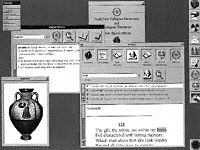
1991
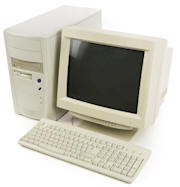
Data storage continued to make exponential progress into the 1990s and beyond. Floppy disks were replaced by CD-ROMs, which in turn were replaced by DVD-ROMs, which in turn began to be superseded by the Blu-Ray format. Home PCs with 100 GB hard drives were common by 2005 and 1 terabyte (TB) hard drives were common by 2010
1995
Apple allows other computer companies to clone its computer by announcingCode named Utopia Microsoft Bob is introduced to the public January 5, 1995
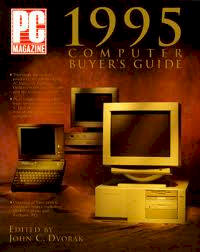
2000
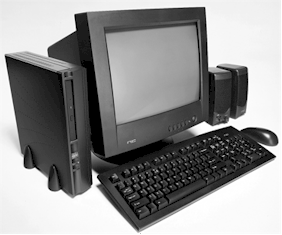
The Linux-based New Internet Computer was a pure Web appliance introduced in 2000 at $199 sans monitor. Without drives, files had to be stored on an Internet storage service. (Image courtesy of The New Internet Computer Company.)
2003
Power Mac G5
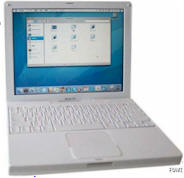
2004
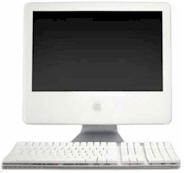
IMac G5
2006
MacBook Pro
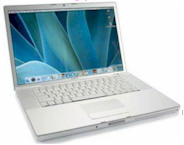
2008
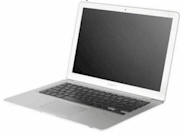
MacBook Air
2010
Lenova - All in One PC
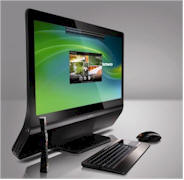
2011
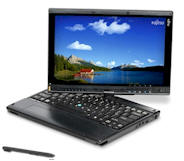
Sony PC-2
2012
Sony Next-Generetion
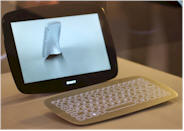
Sponsors
- I DIG SPORTS
24 Hours sports live from around the world - I DIG VEGAS
Give more to see and do in Vegas than you can possibly imagine. - I DIG NEWSPAPERS
I Dig Newspapers is the network for local Newspapers and International. - I DIG RADIO I Dig Radio HD the best locations for HD stations on the internet.
- I DIG CUISINE Check out the latest news about food, wine, cooking and culinary arts from the editors at idigcuisine.com
- I DIG GADGET Is designed to provided technology news on the latest gadgets, plus advances in the the technology









